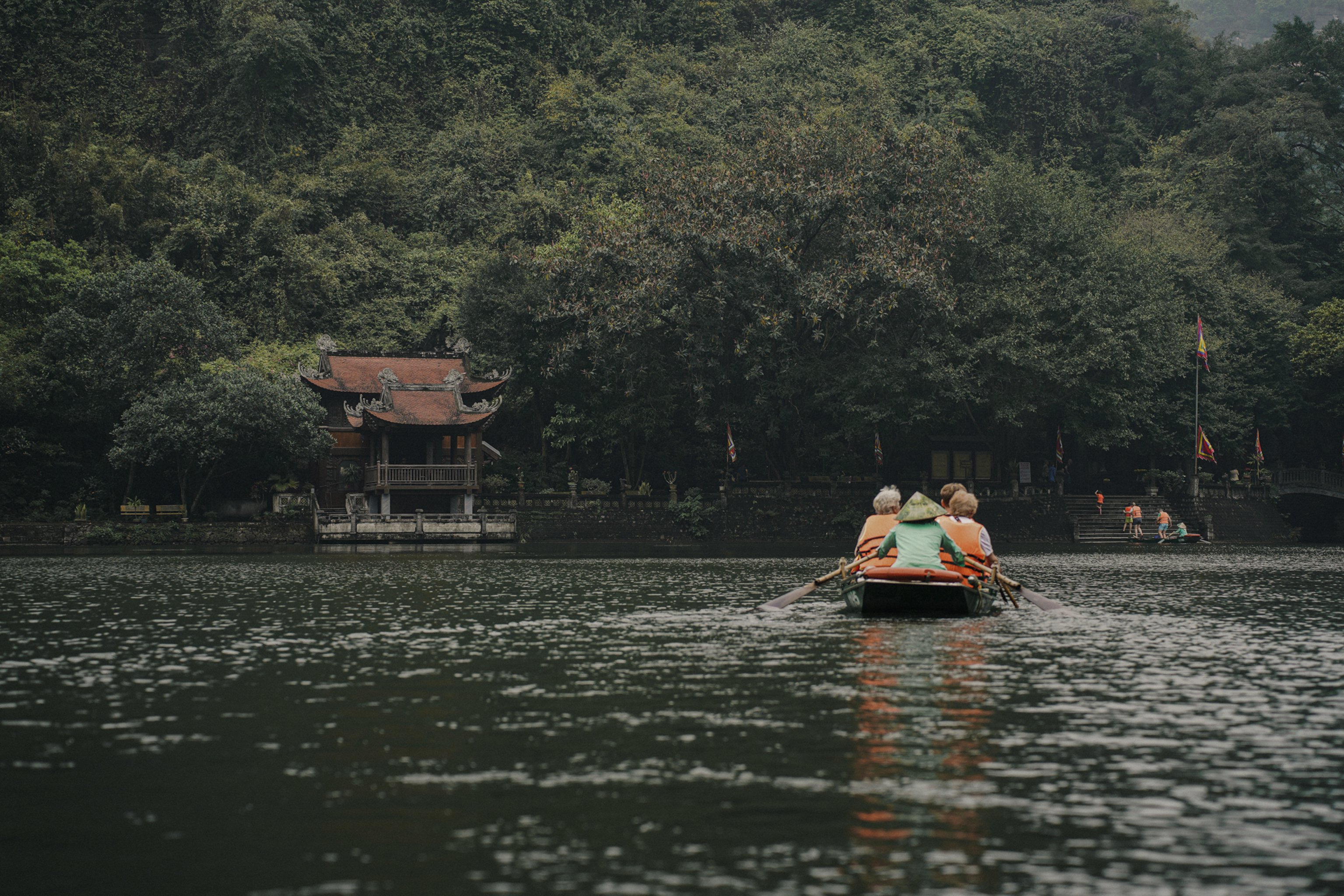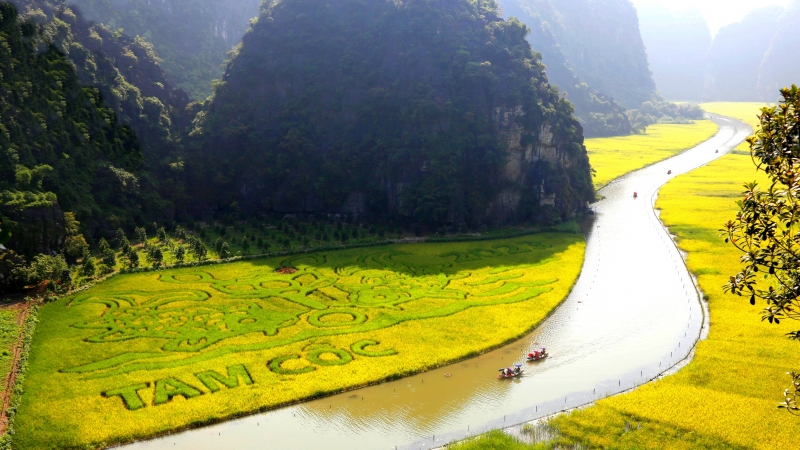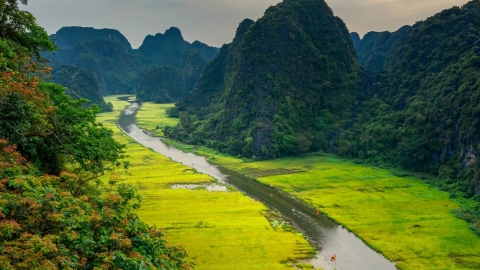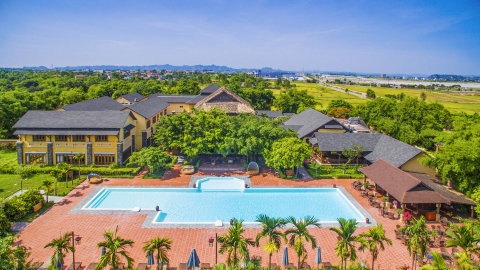In 2014, the Trang An scenic complex was recognized by UNESCO as a World Cultural and Natural Heritage. The entire 12,252 ha area of the Heritage site is a majestic mountainous area created by many stone towers, sinkholes and valleys, connected by streams, forming year-round flooded caves and a system of primitive flora and fauna. Dotted in that primitive space are the depth and ancient moss of the communal houses, temples and palaces located at the foot or halfway up the high mountain ranges.
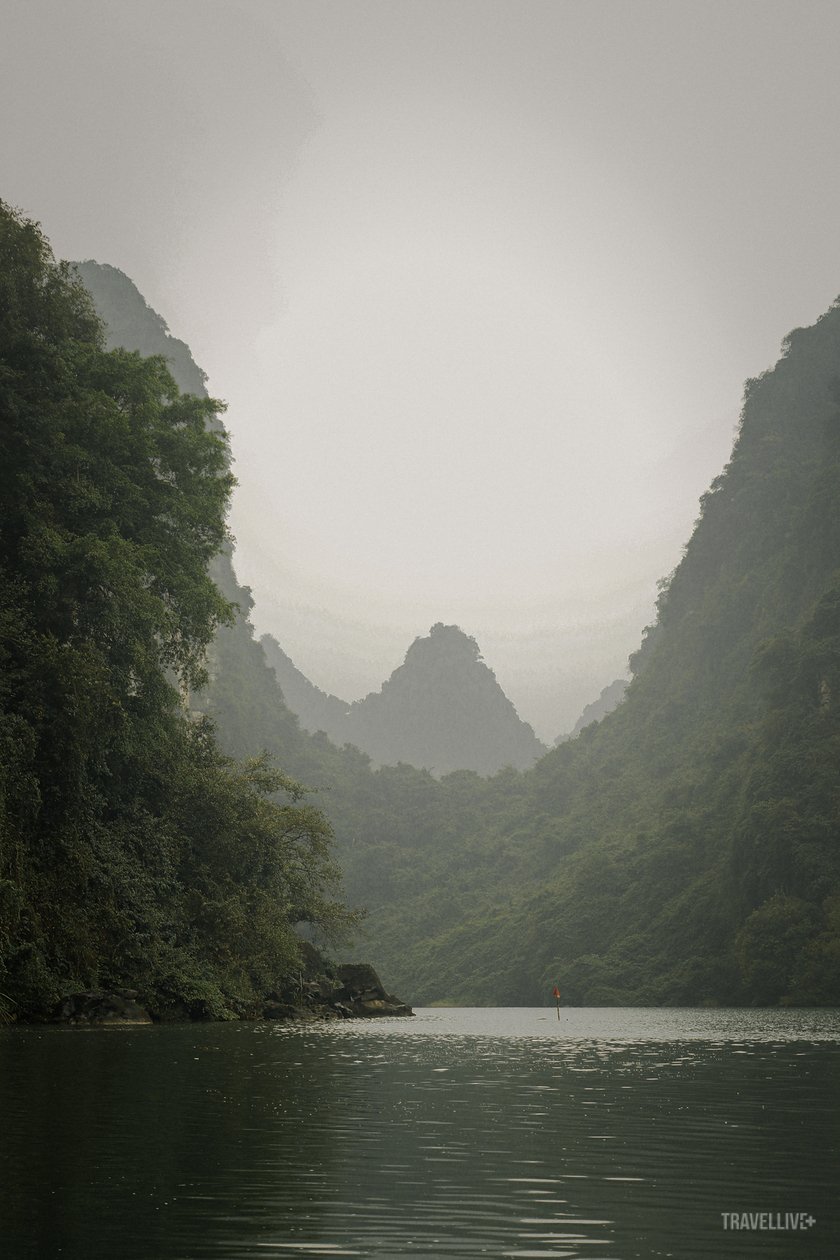
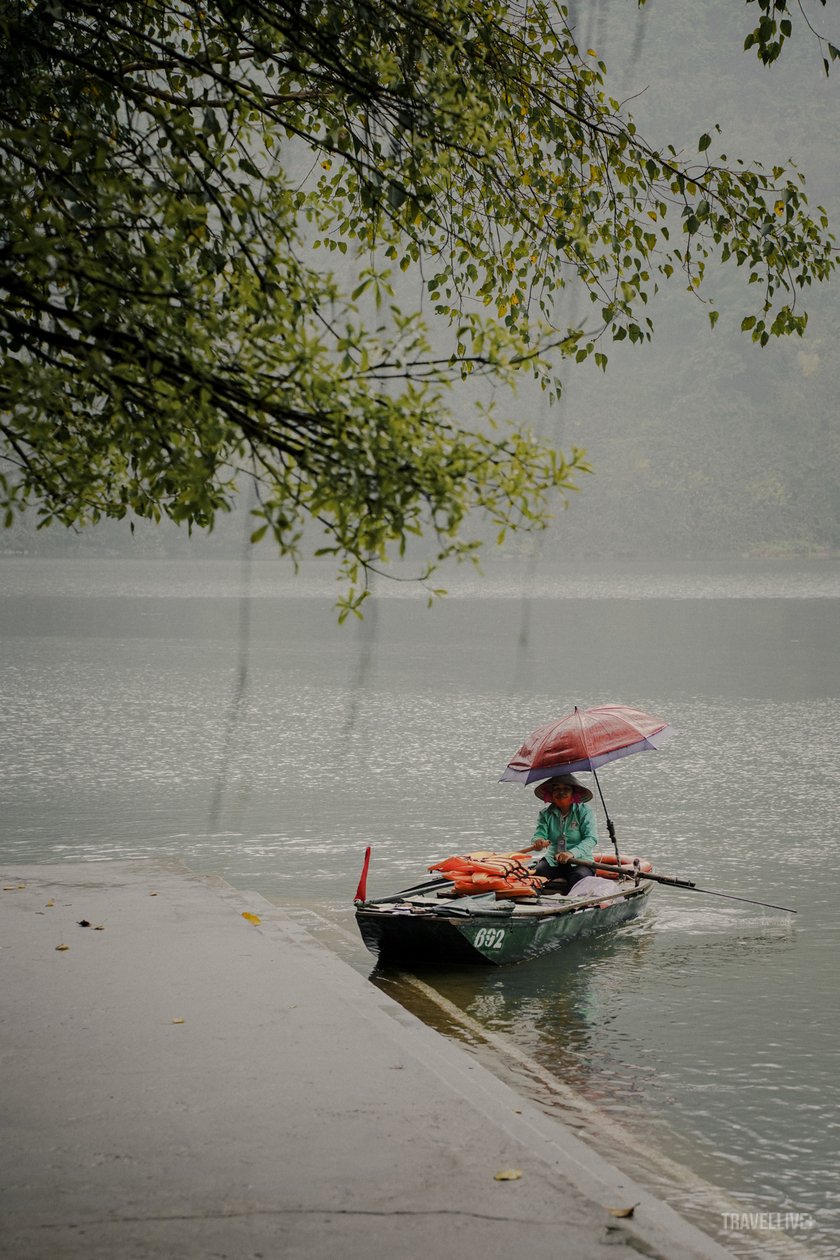
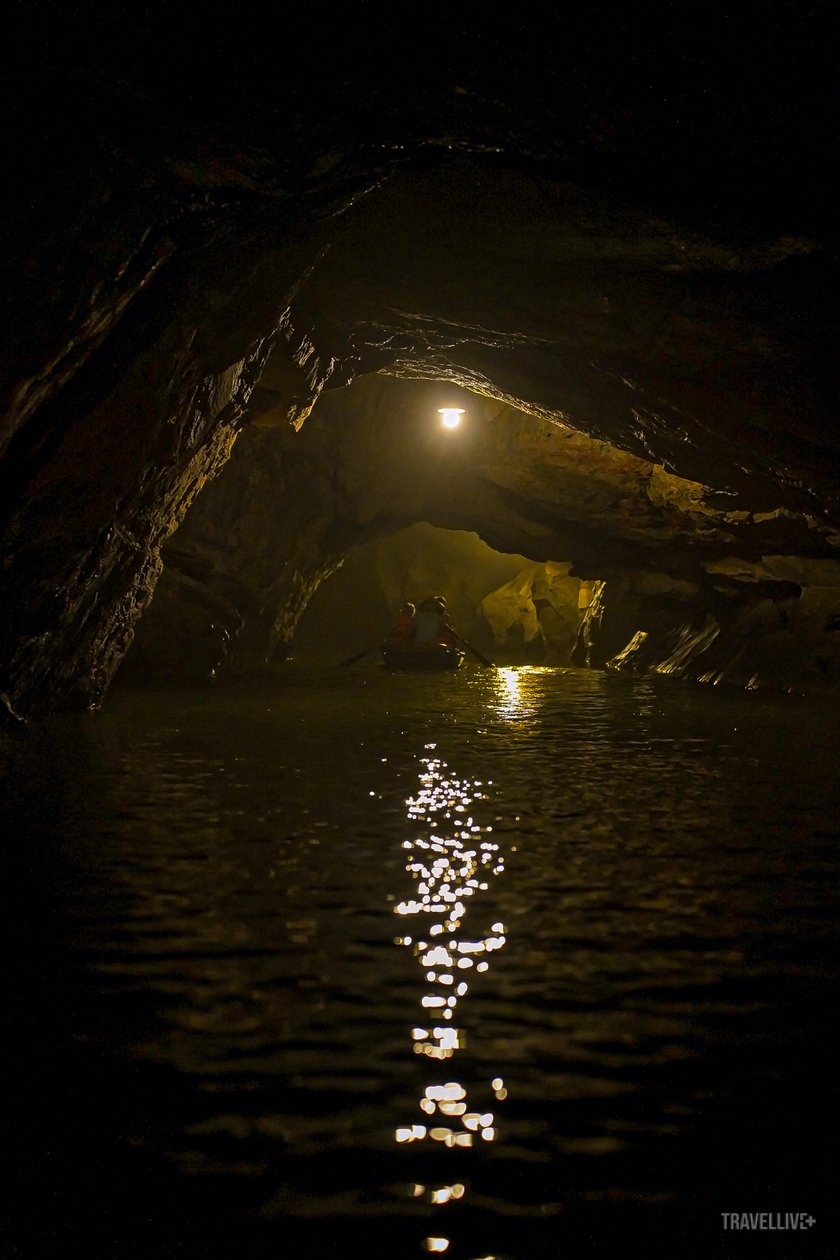
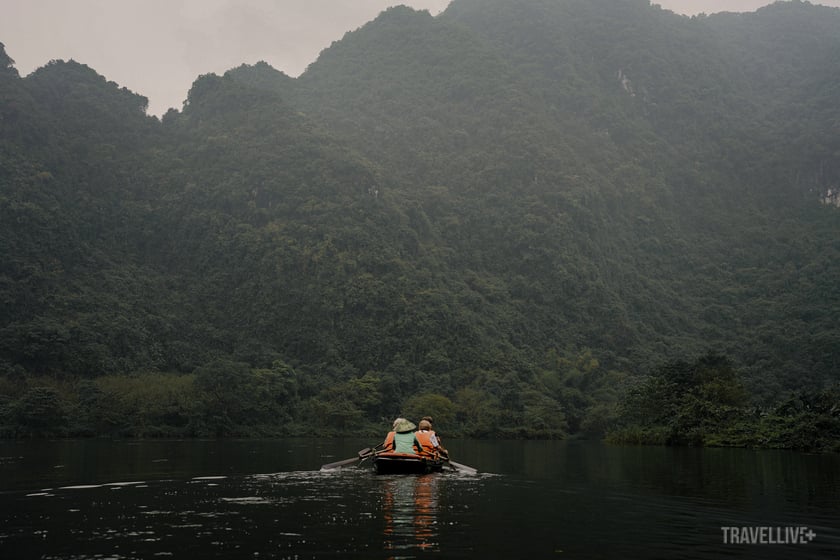
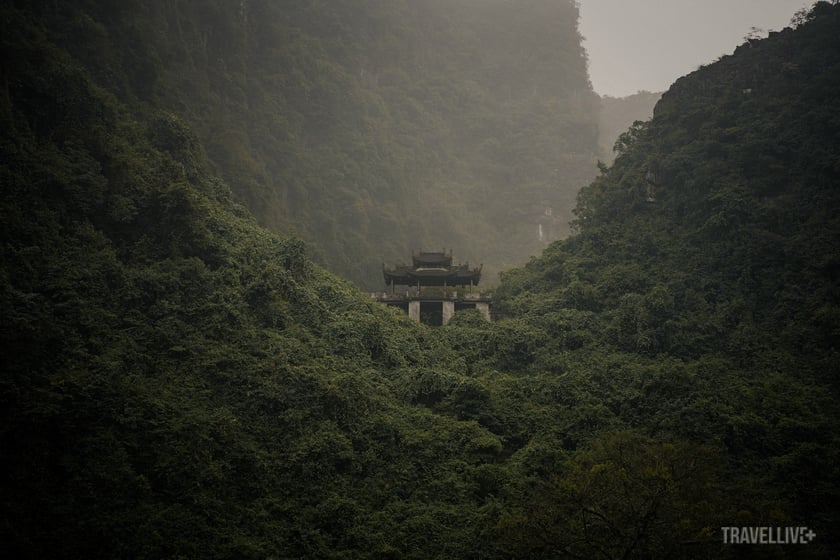
Trang An possesses the lyrical beauty of mountains and rivers with mossy, ancient features from communal houses, temples, and palaces bearing historical marks.
11 years since UNESCO officially listed Trang An Scenic Landscape Complex as a World Cultural and Natural Heritage - the first mixed heritage of Vietnam and Southeast Asia, Trang An still retains its original natural beauty. The trees and river water blend together in a green color, cooling the hearts of visitors on hot summer days.
Tourists go to the counter to buy tickets for 250,000 VND/person, 4 people/boat to experience Trang An cruise for 3 hours. During the trip, tourists will visit 9 caves, 3 spiritual works of historical value located in the middle of a "feng shui" landscape.

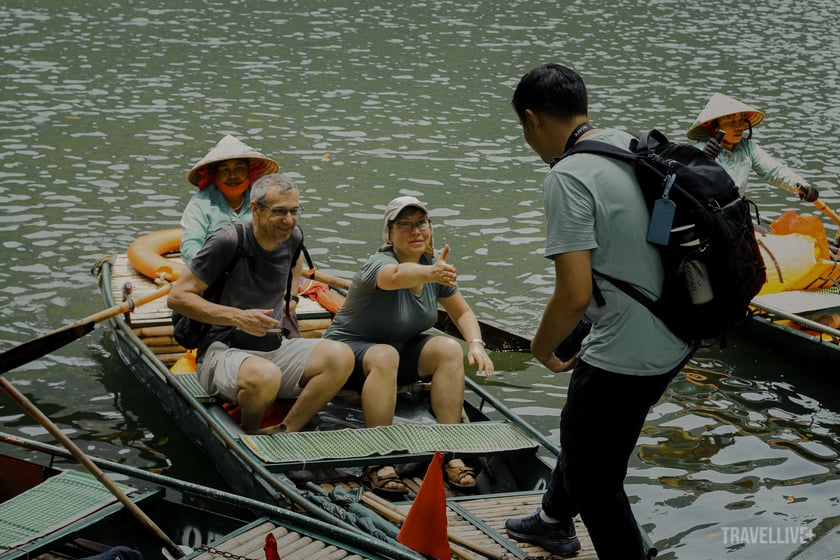
Experience sitting on a wooden boat for 3 hours to help visitors admire and explore the full beauty of Trang An
The wooden boat going downstream takes visitors to explore the first spiritual site - Trinh Temple, also known as Phu Dot. The temple is located at the foot of the mountain in the "leaning on the mountain, facing the water" position, and has existed for more than a millennium. In 2003, the temple was restored with materials from four-piece wood (dinh, lim, sen, tau), following the Dinh-shaped architecture. The temple is a place of worship for the "four pillars of the court" - four founding heroes who had the first merit in suppressing the rebellion of 12 warlords, opening the Dinh dynasty: Ngoai giap Dinh Dien; Dinh Quoc cong Nguyen Bac; Do ho phu si su Luu Co and Trinh Tu.
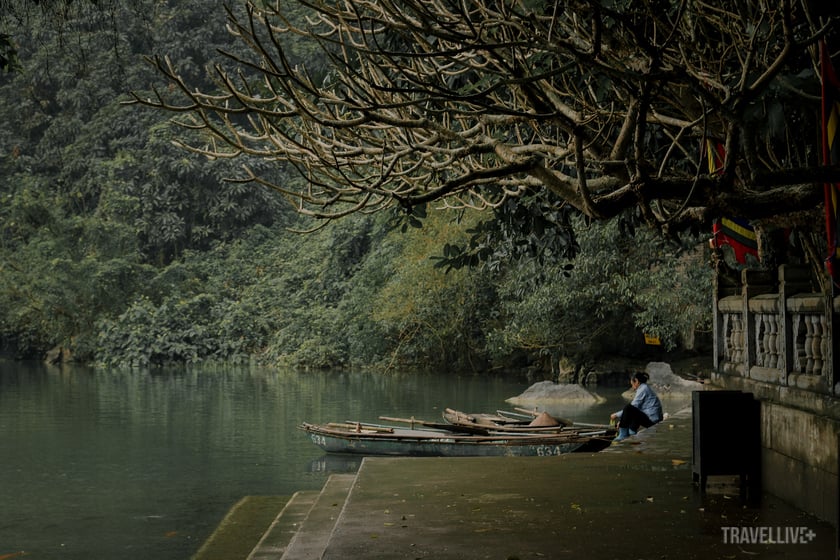
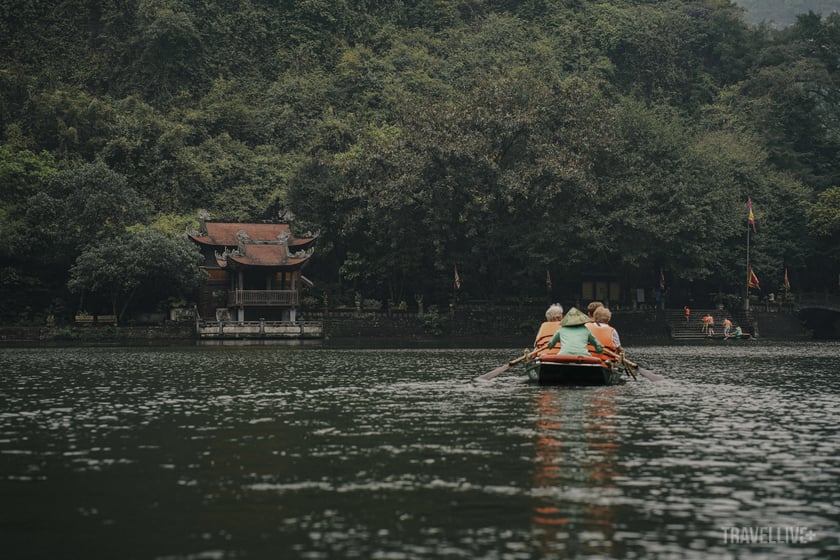
Trinh Temple or Phu Dot Temple is more than 1000 years old, a place to worship the "four pillars of the court" during the reign of King Dinh Tien Hoang.
The incense burner in the middle of the sky worships the generals of the Dinh dynasty. The worshiping hall worships Ta Thanh Tru and Huu Thanh Tru, two great generals who carried the 6-year-old Lord Dinh Toan into hiding in the mountains and forests to avoid the Le dynasty's pursuit when the court turmoil occurred in 979. When Queen Mother Duong Van Nga gave the royal robe to the Ten-way General Le Hoan, the two did not submit and committed suicide here. Trinh Temple is considered one of the historical evidences of the turmoil between the Dinh and Le dynasties.
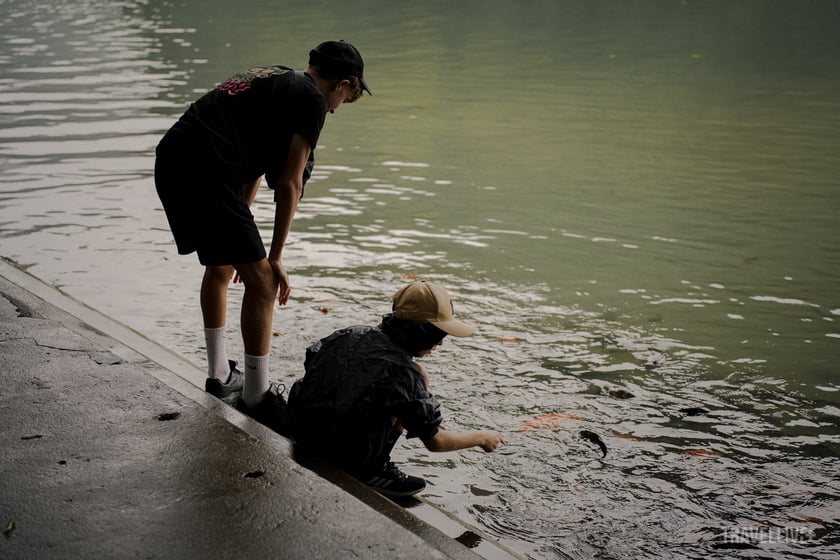
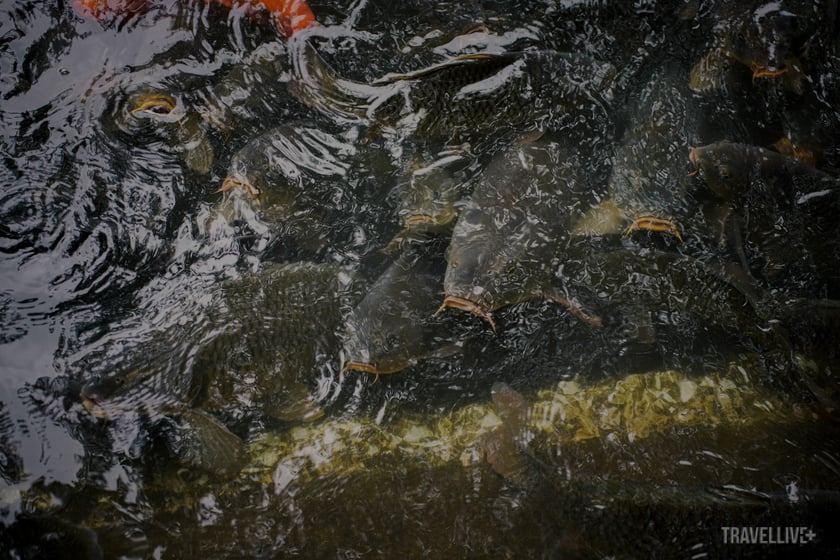

Incense burner in the middle of the sky to worship the generals of the Dinh dynasty
After 20 minutes of visiting Trinh Temple, visitors continue to take a boat through the Wine Making Cave, about 250 meters long, with thousands of red-lidded wine jars along both sides of the cave. Legend has it that in the cave there is a well more than 10 meters deep, with clear and sweet water, used by our ancestors to make wine. The wine jars are distilled and aged right in the cave, absorbing the essence of heaven and earth. Later, during the process of dredging and renovating the cave, many jars, pots, jars and tools used in the wine making process were found and some are on display in the cave.
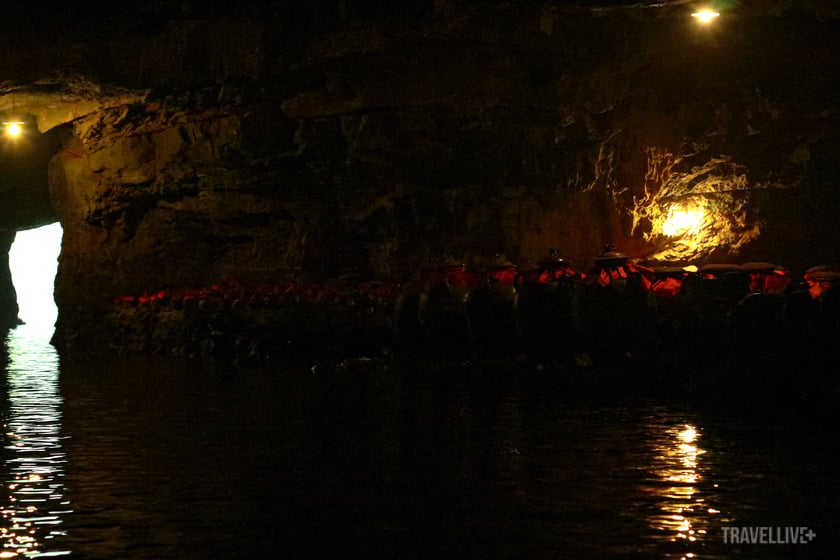
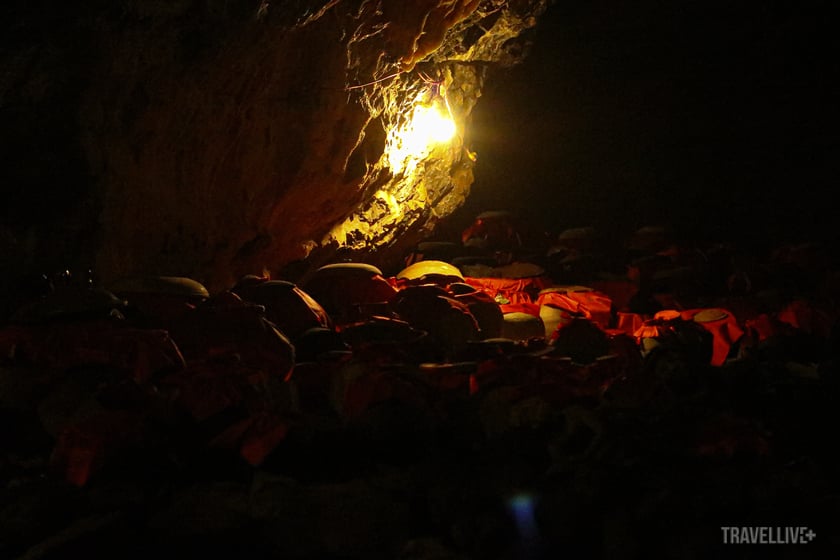
Passing through the Wine Cave, visitors arrive at Tran Temple located in the center of Trang An Scenic Complex, which is also the heart of the Heritage. The temple is also known as Noi Lam Temple, located in the forest, worshiping Quy Minh Dai Vuong and his wife, Hoang Phi Quy Nuong. According to legend, Quy Minh was a general of King Hung, assigned to guard the Son Nam border.
The temple is located halfway up the mountain in the Trang An mountain range. From the boat dock, visitors take about 20 minutes to climb 175 winding stone steps, amidst a quiet, sacred and ancient space to reach the top, then go downhill to enter the temple.
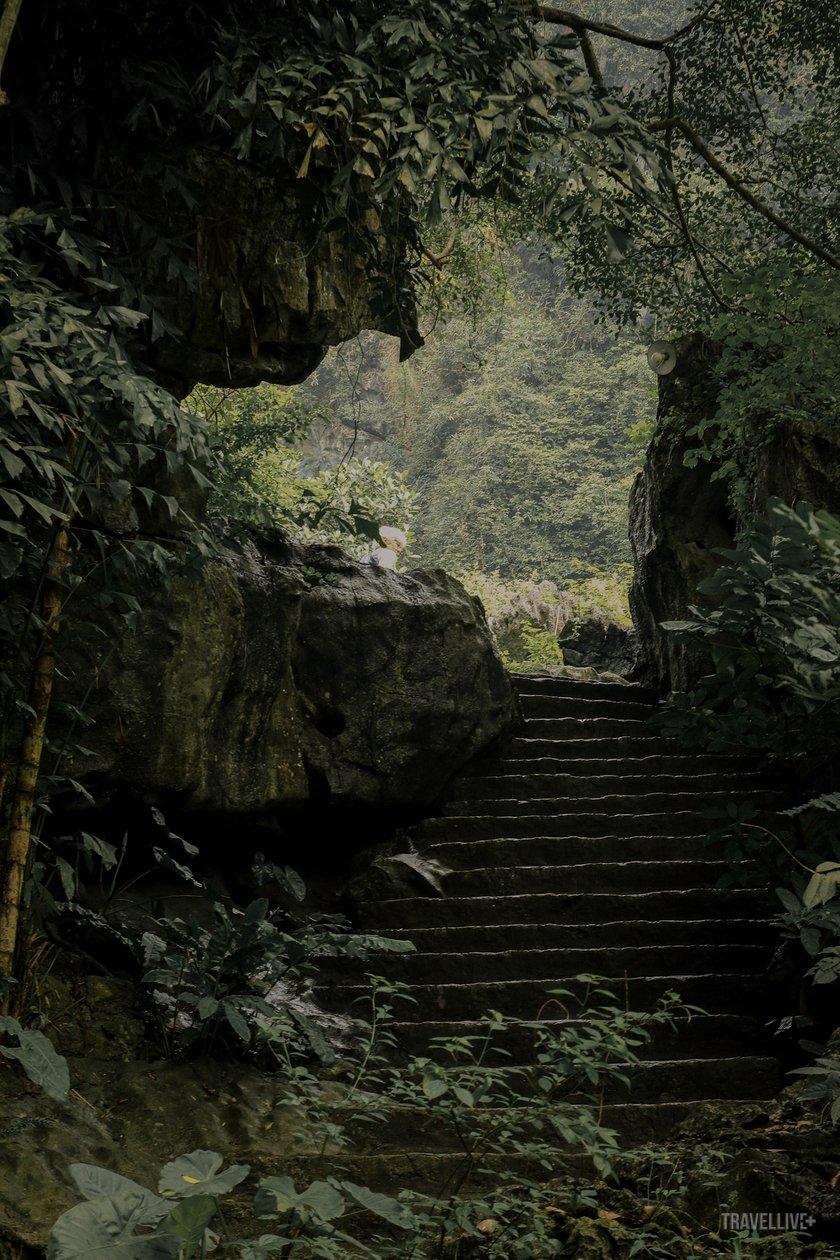
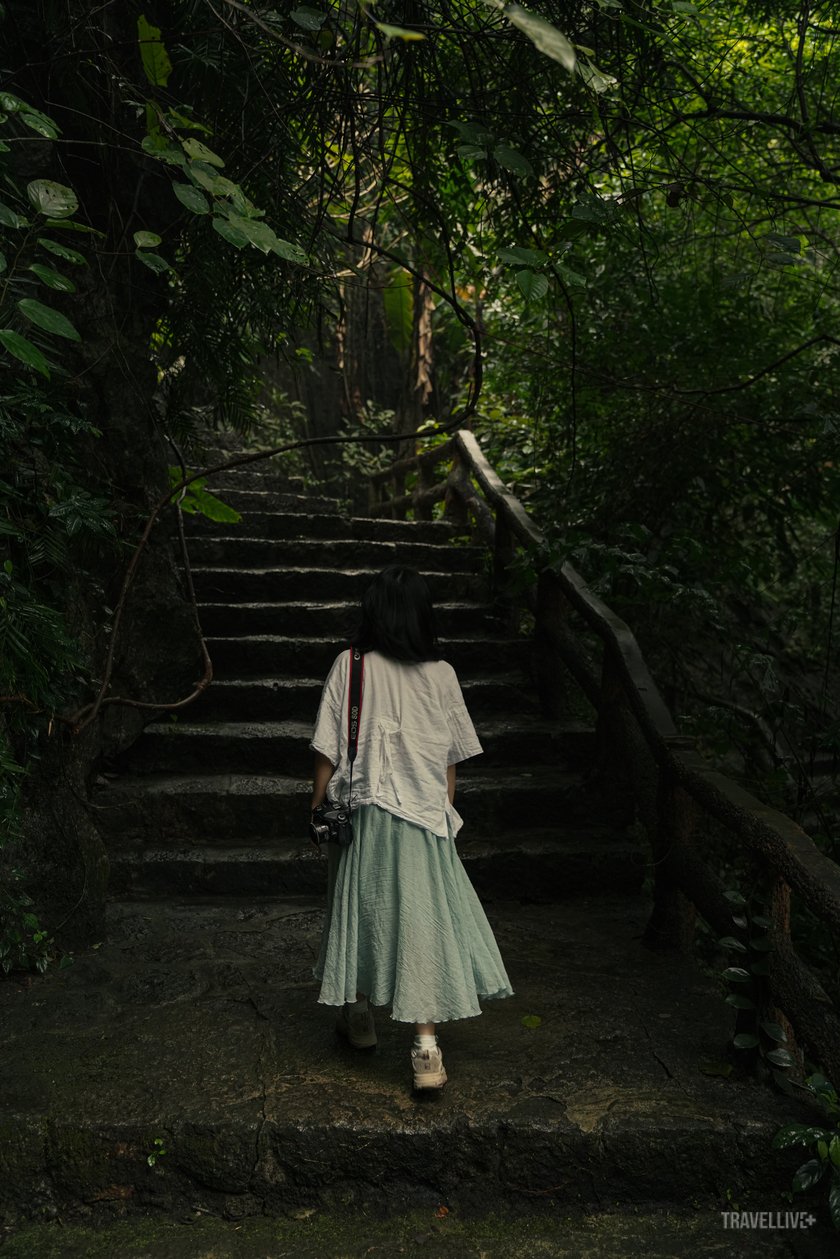
Passing Tran Temple, the boatman's oars take visitors through a series of caves: Hang Ba Giot, Hang Seo, Hang Son Duong and Hang Khong before reaching Phu Khong. The entrance to the cave is no more than 3m high, but inside opens up a whole world. The rugged cliffs, protruding and receding, form a winding path with nearly 90-degree turns. On the ceiling of the cave, yellow lights illuminate the boatman's path, while reflecting shimmering, shimmering light from the stalactites onto the water surface.
Ba Giot Cave leaves an impression on visitors with its stalactites, also known as “Buddha trees”, growing upside down from the ceiling. The colorful stalactites in the cave are not dry but soaked in water, continuing the process of erosion over time to create new shapes and colors.

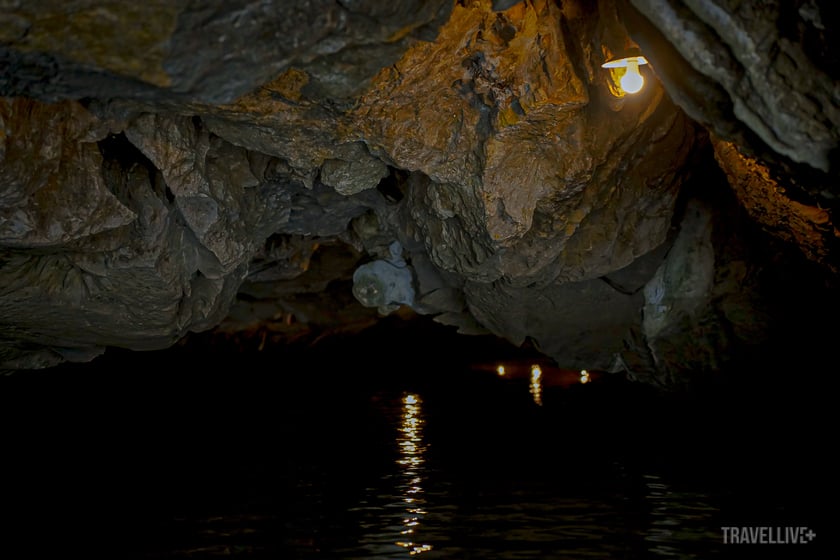
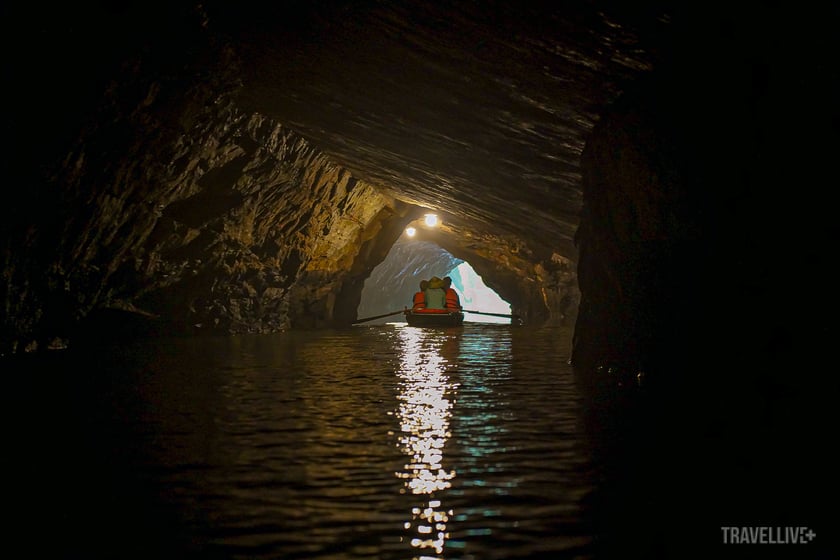
The wooden boat weaves through natural caves where visitors can touch the cool, steamy limestone slabs.
After passing through Ba Giot cave, visitors continue to go through Seo cave which is 100m long and Son Duong cave which is 250m long, to Thung Khong which is about 92,567m2 wide, where Khong palace is located.
Phu Khong is the place to worship 7 loyal mandarins of the Dinh Dynasty, who personally embalmed King Dinh Tien Hoang and then committed suicide, keeping the secret of the king's resting place. The general guarding the southern border of the capital during the Dinh Dynasty, with the title of Dinh Cong Tiet Che, was moved by their loyalty and set up an incense burner and planted a fig tree next to it. Later, the people of the area joined hands to build the palace to commemorate the loyal mandarins. The fig tree still lies there on a rocky mound, its roots sticking deep into the ground, reaching up and clinging to the rock, often bearing fruit in mid-August, on the anniversary of King Dinh Tien Hoang's death.
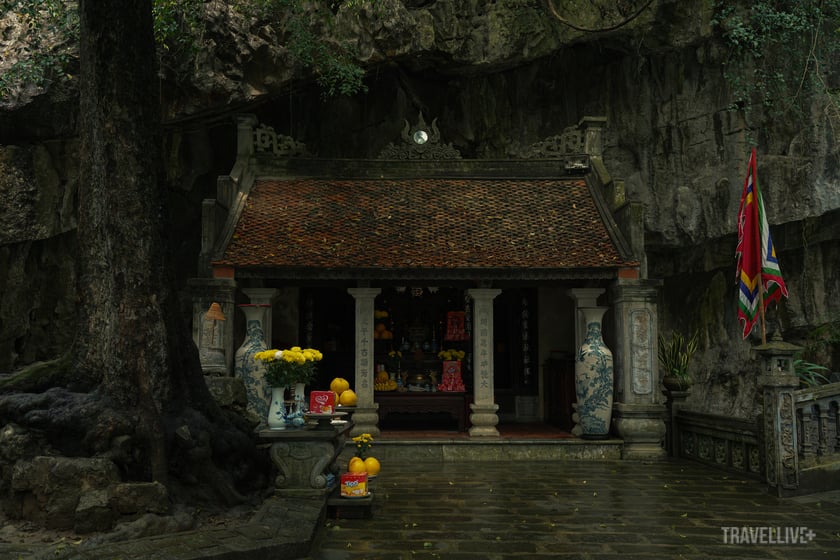
Phu Khong is located under an old banyan tree, established by the people to commemorate the merits of loyal mandarins.
After visiting Khong Palace, going deeper inside to the other side of the boat dock, visitors will pass by Bao Hieu Pagoda. This is a pagoda built by the people of the ancient capital to worship the souls of soldiers, compatriots who fought for the people and the country, for the ancient capital Hoa Lu and the homeless souls who rely on Buddha, receiving incense all year round.
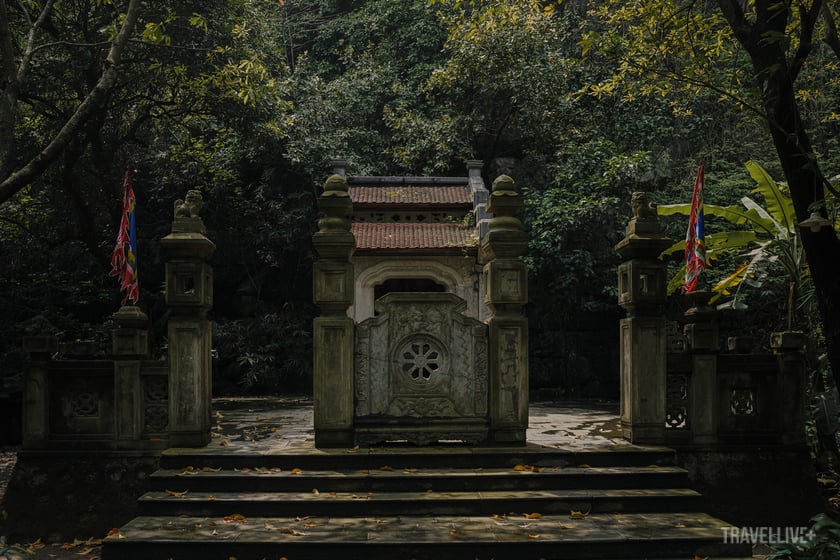
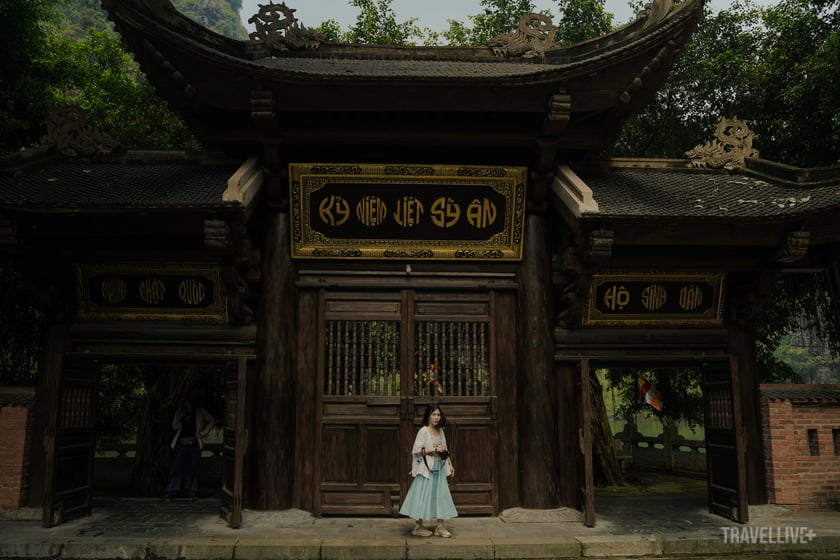
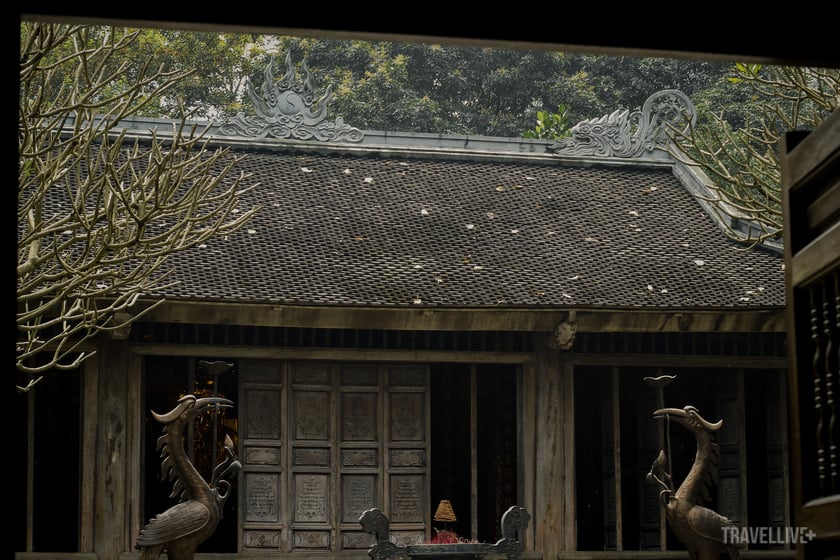
Bao Hieu Pagoda was built by the people of the ancient capital to worship and burn incense to the souls of soldiers and compatriots.
Leaving Phu Khong, visitors will visit Tran Cave and Quy Hau Cave before returning to the wharf. If choosing other cruise routes, visitors will have the opportunity to visit other places such as Dot Cave with a 1km long stalactite system and the longest cave in Trang An; Dia Linh Mountain standing tall like a pen tower in the middle of the river; Cao Son Temple - the southern citadel of Hoa Lu Capital in the 10th century, later the capital of the Tran Dynasty's resistance against the Yuan-Mongol invaders in the 13th century; Vu Lam Palace - where King Tran Nhan Tong first became a monk before founding the Truc Lam Zen Sect or Phuong Hoang Mountain - the recognizable symbol when referring to Trang An Heritage.

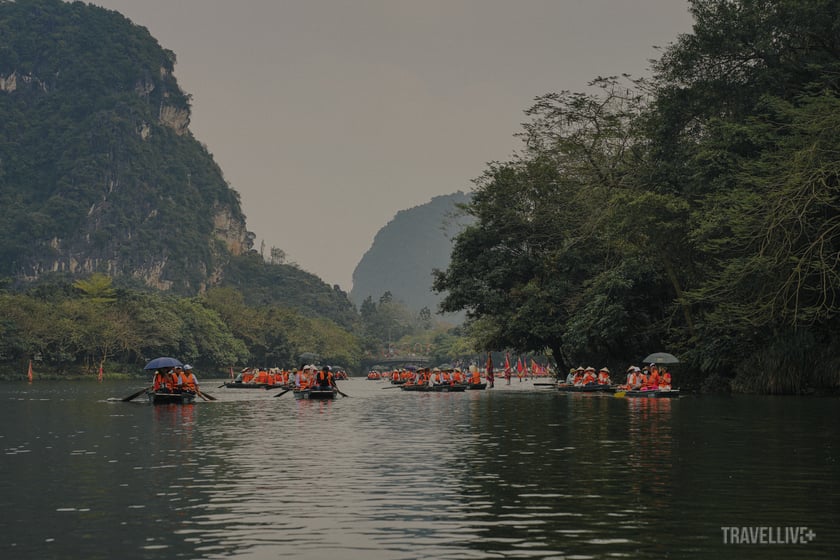
Trang An cruise is an experience loved by many domestic and international tourists when coming to the historic ancient capital.
Located on the southern edge of the Red River Delta, about 90 km from the capital Thang Long - Hanoi, most of the historical, architectural and scenic relics in the Trang An scenic complex have been identified and ranked at the provincial level (26 relics) and the national level (20 relics). Coming here, visitors can not only relax amidst the picturesque landscape of mountains and rivers, but also admire the relics that bear the mark of the feudal dynasties of Vietnam, preserved in the midst of nature through thousands of years of change.






